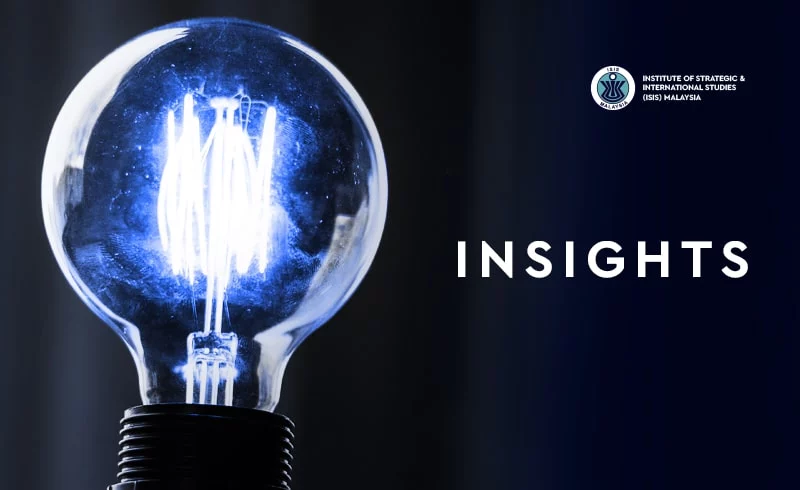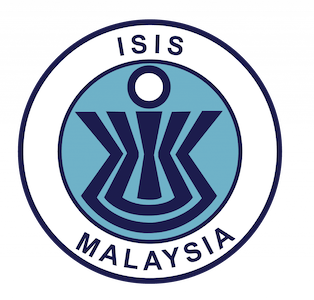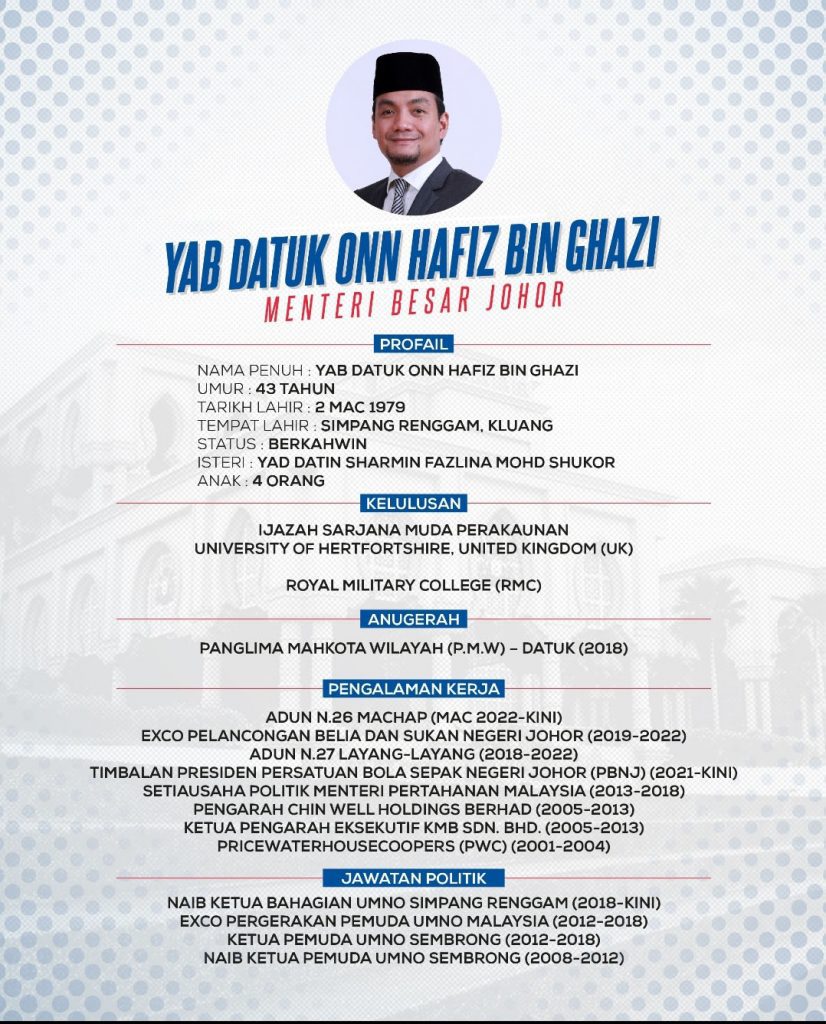The re-election of Donald Trump as the President of the US for a second term is poised to reshape the trajectory of ASEAN-US relations, bringing significant shifts across multiple domains. In December, ASEANFocus+ sought experts’ insights on how the dynamics of this partnership are expected to evolve, in areas of geopolitics, trade, the South China Sea, technological governance, energy, and environmental cooperation.
THOMAS DANIEL|JOANNE LIN|DON MCLAIN GILL|JOHN LEE|MARIA MONICA WIHARDJA|BRIAN EYLER
How might a transition from the Biden administration to a Trump administration reshape ASEAN-US relations?
DANIEL: While some in the epistemic community have forecast a dramatic decline in US-ASEAN engagement due to disinterest from a second Trump administration, such a shift would likely be marginal. The outgoing Biden administration approach to the regional grouping has not been as robust as initially expected due to its prioritisation of emerging regional minilaterals and key partners in Southeast Asia. The second Trump administration would likely continue this approach, deprioritising, but not ignoring ASEAN.
The real changes are likely to manifest in the dynamics between individual ASEAN member states and the US, where one could see emerging nuances and shifts in strategic approaches. Southeast Asian countries would try to either proactively engage the US or keep a low profile depending on their strategic interests. Washington’s focus on bilateral relations with specific countries in the region would be based on trade, political, and security priorities.
President Trump’s re-election could potentially undermine multilateralism. How can ASEAN leverage its collective bargaining power to deepen engagement with the US?
DANIEL: Multilateralism is already under pressure in the Asia-Pacific, even without the advent of a second Trump administration, as formal and informal minilaterals continue to gain traction. Minilateralism is here to stay, and while ASEAN may view these developments as a threat, it must adapt to the regional landscape. Such groupings, though less inclusive, still fall within the ambit of multilateralism and often make more strategic sense for its participants. ASEAN must position itself (or its member states) to be involved in as many of these emerging minilaterals as possible, while maintaining its own more inclusive mechanisms.
ASEAN needs to demonstrate its value as it proactively engages with Washington to keep it meaningfully involved in this region. This includes a clear understanding of the evolving dynamics of the second Trump administration and its priorities, to better position ASEAN as a regional partner of choice.
How can Malaysia as the ASEAN Chair in 2025 demonstrate effective leadership in navigating ASEAN’s challenges, particularly in light of shifting dynamics in the United States?
DANIEL: Malaysian policymakers are very much aware that their ASEAN chairmanship comes with both challenges and opportunities. Malaysia will need to somehow shepherd an association of 10, soon-to-be 11, member states in addressing the challenges and leveraging the opportunities while adapting to the shifting dynamics in the US. The theme for 2025 “inclusivity and sustainability”, signals a commitment to ensuring the long-term resilience of ASEAN as a regional organisation and community of nations.
Malaysia’s approach is twofold. First, it aims to reinforce the long-term strategic value of ASEAN within the wider region, via ASEAN-led mechanisms like the East Asia Summit (EAS), which counts the US among its primary stakeholders. Cooperation with other dialogue partners will be an important multiplier in these platforms. Second, to hedge against possible sidewinds from Washington, Malaysia aims to broaden ASEAN’s engagement with other stakeholders, including regional organisations like the Gulf Cooperation Council (GCC) and possibly the Indian Ocean Rim Association (IORA) and MERCOSUR, to diversify ASEAN’s engagements and options beyond traditional Dialogue Partners.
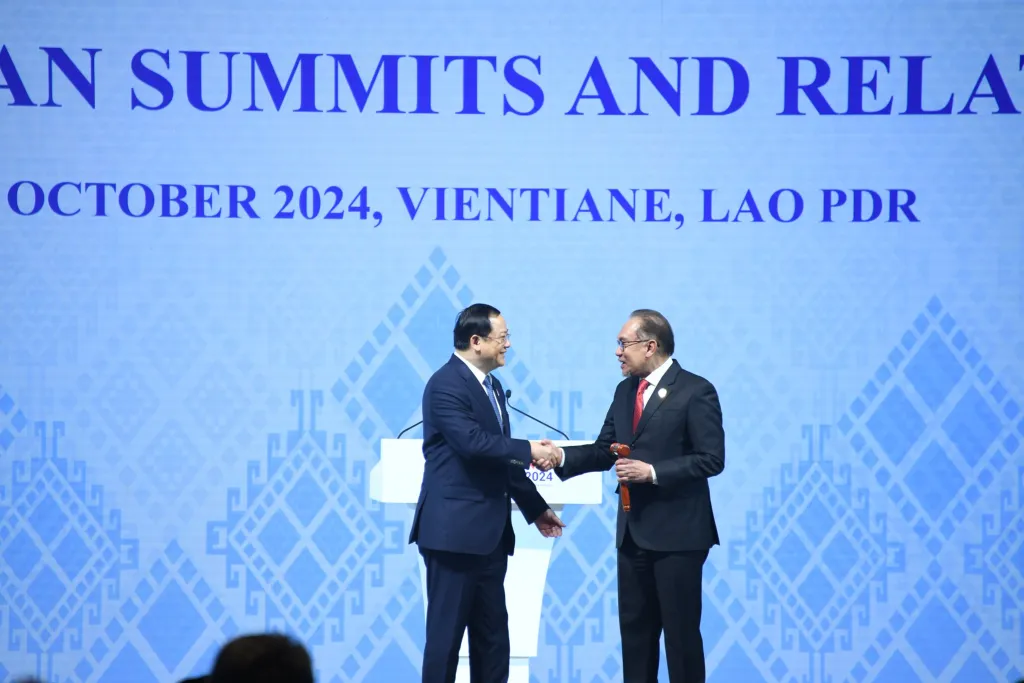
The US elevated its diplomatic relations with ASEAN to a Comprehensive Strategic Partnership (CSP) in 2022 under the Biden administration. Could you share your insights on the current state of the ASEAN-US relationship under the CSP?
LIN: The elevation of ASEAN-US relations to a CSP in 2022 has propelled collaboration in key areas such as maritime security, digital transformation, and climate action. Notable initiatives include the establishment of an ASEAN-US Center and the inaugural ASEAN-US Ministerial Dialogue on Environment and Climate Change in 2023. However, despite progress in functional cooperation, President Biden’s absence from consecutive ASEAN-US Summits in 2023 and 2024 has raised doubts about the US’s commitment to engage ASEAN at the highest level to support its centrality. This perceived shift in priorities and a focus on exclusive security frameworks like the Quad and AUKUS risks sidelining ASEAN’s strategic role in regional security. The gap between US rhetoric and action undermines trust, risks ceding influence to more consistently engaged powers, and may weaken America’s standing in one of the world’s most strategically vital regions.
The US Indo-Pacific Strategy under President Biden has strengthened alignment with the ASEAN Outlook on the Indo-Pacific (AOIP) to promote regional stability and economic cooperation. What would you expect from the US under President Trump to substantiate this commitment?
LIN: The incoming President Trump administration’s prioritisation of an America-first approach to maximise US economic and security benefits is likely to pose challenges to ASEAN’s priorities under the AOIP. Trump’s scepticism towards multilateral climate initiatives, evident in his withdrawal from the Paris Agreement in 2020, points to a probable deprioritisation of ASEAN-US climate cooperation established under Biden —potentially undermining a key pillar of the CSP. The imposition of tariffs may further strain economic ties and limit opportunities to deepen economic engagements between ASEAN and the US. Furthermore, Trump’s inconsistent attendance at ASEAN Summits during his first term and preference for bilateral engagements over ASEAN’s multilateral frameworks, including the East Asia Summit, risk eroding ASEAN centrality and credibility. To substantiate a commitment to the AOIP, a Trump administration would need to move beyond its transactional policies, embrace ASEAN’s multilateral aspirations more meaningfully, and demonstrate consistent engagement with ASEAN-led mechanisms.
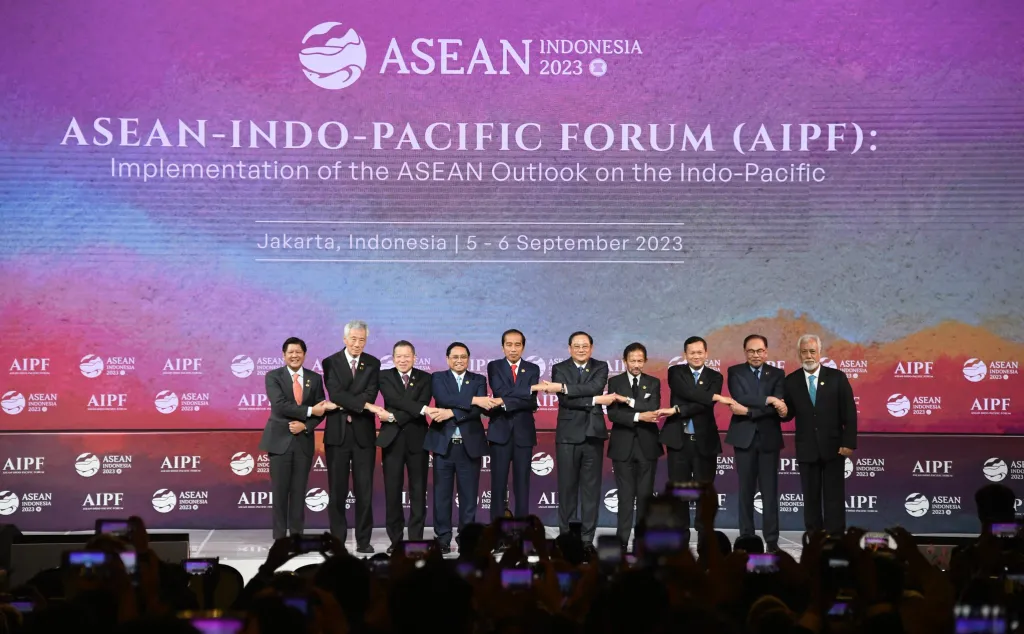
How will the Trump presidency impact US-China relations, and what are the potential opportunities and risks for ASEAN amid the intensifying competition between these two major powers?
GILL: The Trump 2.0 presidency could alter and shape the long-term trajectory of Southeast Asian geopolitics. Common concerns of Southeast Asian states stem from the events that unfolded during his first term in office. Among these anxieties were his protectionist economic policies and unwillingness to have the US play a more prominent role as a net security provider without considerable burden-sharing from allies. Trump also possessed a disdain for integrative economic and defence institutional cooperation. These scenarios compound ongoing tensions Southeast Asian states face when pursuing their economic and security interests without falling victim to the structural uncertainties brought by the US-China power competition. Regardless of growing trade ties, the security implications of Beijing’s regional posture continue to push regional states to diversify options. Inevitably, among the major powers, the US still possesses unmatched material capabilities that are essential for the interests of Southeast Asian states. Thus, learning from experience, several ASEAN state leaders have already established communication with the president-elect, including the Philippines’ Marcos Jr, Indonesia’s Prabowo, and Singapore’s Wong. This stems from the understanding that personality matters when it comes to Trump. Along with developing positive personal rapport, Southeast Asian leaders will need to proactively position their countries’ interests in Trump’s transactional worldview of international politics.
Would a Trump 2.0 presidency adopt a more assertive military posture to counter China’s activities in the South China Sea (SCS)? How would this affect the disputes between ASEAN’s claimants (including the Philippines) and China?
GILL: In Trump’s America First vision, maintaining US pre-eminence, particularly in the Indo-Pacific will be crucial. The most critical threat to such an interest is China, given how it possesses not only the material capacity but also the political will to challenge the US presence in the region. This will inevitably affect the security dynamics of the exacerbating South China Sea dispute. However, the effect will be determined based on how individual claimant states seek to incorporate the US in their respective strategic calculations and how Washington views their role in its geopolitical outlook.
Regarding the Philippines-US alliance, I do not think there would be a radical change in the trajectory of bilateral relations, particularly in defence. The stakes to maintain and strengthen the Philippine-US alliance have become quite high given the continued expansionist ambitions of China and the fact that the alliance has become a hub for cooperation within the larger US alliance network. Manila must endeavour to position itself favourably within Trump’s transactional foreign policy. There needs to be more effort and consistency in negotiations on critical issues that both allies face in the region to ensure that Washington understands the acute challenges the Philippines faces at sea and how they directly intersect with Washington’s regional interests.
US economic engagement with the region has been lacklustre since the Trump 1.0 administration, notably marked by the US withdrawing from the Trans-Pacific Partnership (TPP) Agreement. What implications could Trump’s pattern of disengagement have on the US-led Indo-Pacific Economic Framework for Prosperity (IPEF)? Or might there be a renewed economic strategy toward ASEAN under Trump 2.0?
LEE: It is important to recall that opposition to the TPP was bipartisan, with Hillary Clinton also opposing the TPP in 2016. Trump’s stance reflects deep tides against free trade driven by the wealthy countries’ domestic politics, which are unlikely to change soon.
Increasingly, this trend seems directed not just at China but at a growing slice of the developing world. One recent analysis found import restrictions imposed against ASEAN members have climbed sharply since 2016, now converging numerically with those imposed against China.
UN data shows that in late 2024, developed countries’ trade was growing, while developing countries’ trade was stagnating. This fits Trump’s vision of a desirable trade outcome favouring the US. Given that he threatens Mexico and Canada with 25 per cent across-the-board tariffs, despite their enmeshment with the US in a free trade bloc, the prospects for his new administration conceding more than Biden’s did on IPEF or other Asian trade arrangements seem quite dim.
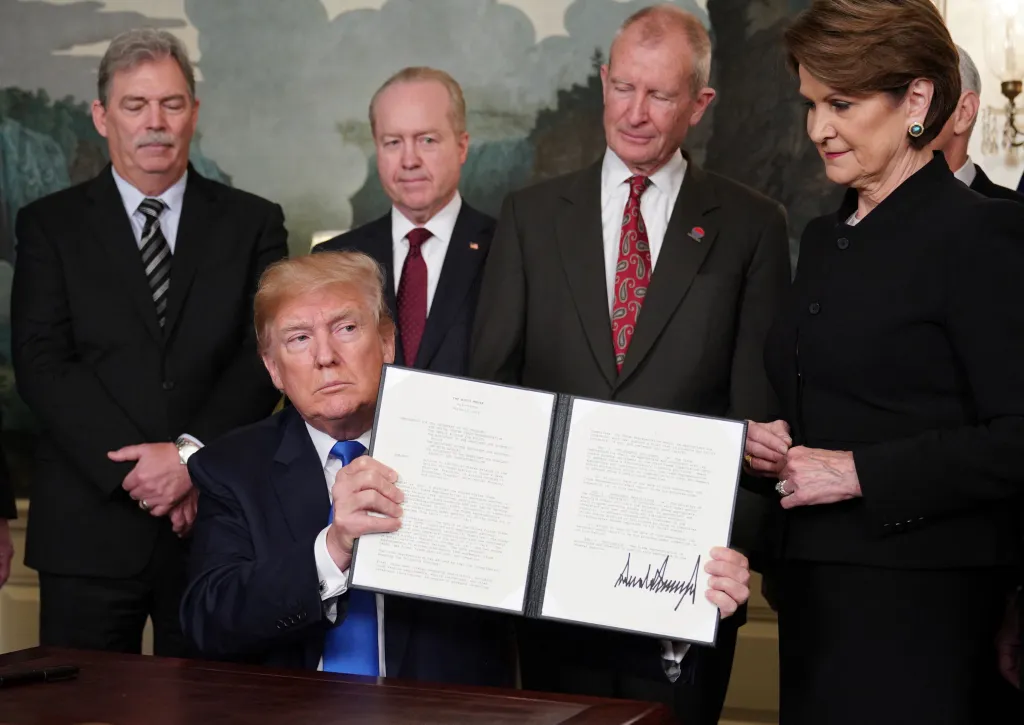
Are ASEAN economies now more at risk of facing protectionist policies given their enhanced integration in the global supply chain, especially as a China +1 strategy for many multinational companies?
LEE: ASEAN economies as ‘technology takers’, dependent on supply chain integration with more advanced economies, are unavoidably exposed to protectionist shifts. They would suffer greatly from economic decoupling from either China or from the US and its allies, which remain crucial providers of technical knowledge and end markets without ready alternatives.
The Biden administration’s eleventh-hour update to export controls targeting China’s microchip industry shows the momentum in Washington to continuously expand measures aimed at retarding Chinese progress. The proposed US controls on connected vehicle technologies show that even for a huge sector like automotive, where China leads the global green transition, Washington will no longer think twice about cutting out Chinese supply chains, including targeting third countries involved in these networks.
However, ‘reshoring’ these globalised industries has so far proved difficult. The role of ASEAN states in these supply chains demonstrates not only their dependence on them, but also their potential strategic leverage.
The US is recognised as a leader in fostering an ecosystem for tech companies to innovate Artificial Intelligence (AI). Under President Biden, efforts have been made to regulate AI through laws and ethical frameworks, though the US still lags behind the European Union in this regard. How do you think the Trump administration would approach this issue?
WIHARDJA: Trump’s administration will bend the US further towards a techno-libertarian proclivity. The US approach to technology has always been market-driven compared to the regulations or rights-based EU’s approach and Chinese state-led model. For example, there is no Federal Law governing data privacy in the US compared to the EU’s gold-standard data privacy regulation, known as the General Data Protection Regulation (GDPR), which has been adopted and emulated around the world, including by some US states and countries across Southeast Asia. The rippling effect of the EU’s regulatory approach to technology (e.g., GDPR, Digital Services Act, Digital Markets Act, and AI Act) has been dubbed as ‘the Brussels effect’. The regulatory battles along the techno ideological spectrum may intensify under the Trump administration, whose policies towards governing emerging technology from AI to biotech, from space exploration to quantum, will drive consequential global technological development for years to come.
President Trump’s more laissez-faire approach to governance, potentially allowing big tech companies to play a central role in winning in the race of AI competition with China, will be expected. How will this rivalry for tech dominance impact trade and investment patterns in the ASEAN region?
WIHARDJA: Biden’s last push in containing China’s development in sensitive technology by issuing the third package of export controls and foreign direct product rule on certain types of advanced semiconductors, semiconductor manufacturing equipment and software tools will impact manufacturers in Southeast Asia, especially Malaysia and Singapore which use US chips and/ or chip technology and export to China. This will in turn adversely affect the investment environment in the semiconductor sector in the Southeast Asian region. Trump’s vow to slam higher tariffs on products coming from the United States-Mexico-Canada Agreement (USMCA) member countries, including Mexico and Canada on top of China, indicates that even US FTA partners, like Singapore, may not be spared. China retaliated to the third package of export controls and foreign direct product rule in less than 24 hours. The short-term benefits that the Southeast Asian region has gained from the US-China trade war and associated supply chain reconfiguration as well as increased domestic production capacity may be more than offset by the intensification of the US-China trade war.
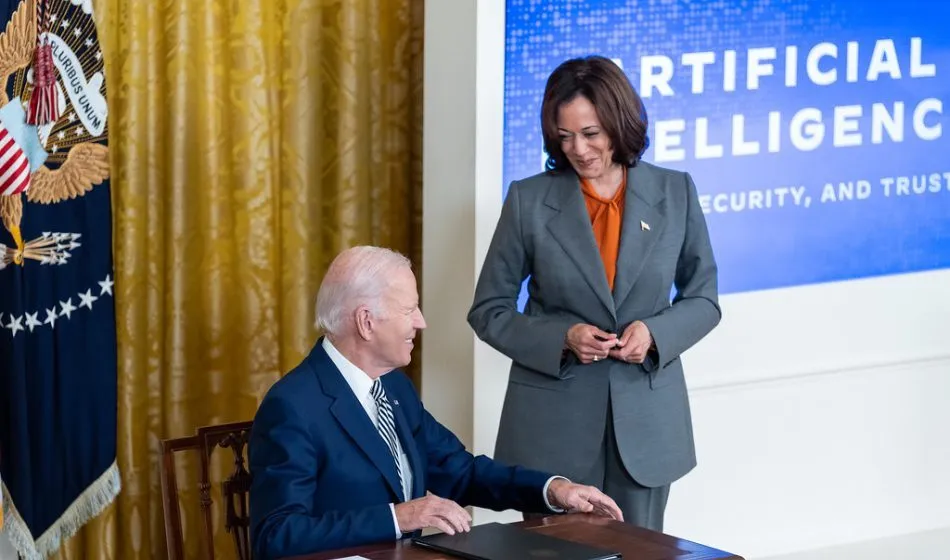
Under President Biden, the US has made significant progress in global energy cooperation, particularly in advancing global climate governance and clean energy. Do you think President Trump could keep up with this commitment?
EYLER: A second Trump administration would likely shift away from emphasising climate governance, but many climate-related initiatives could persist or even expand. During the first Trump administration, US energy and environmental policy focused much on natural gas investments and water security issues in Southeast Asia. As long as the Trump administration chooses to engage Southeast Asia, I expect more of the same. The US would benefit from liquid natural gas (LNG) sales to the region and could play a key role in developing across-Pacific and regional LNG and natural gas supply chains to fuel the growing economies and industrial bases in Southeast Asia.
On the climate adaptation front, the region is likely to experience an increase in climate-induced natural disasters. US security alliances, geopolitical interests, and goodwill will inevitably pull the Trump administration into deepening disaster risk reduction efforts in the region. While these kinds of efforts will not mitigate climate effects, they will enhance Southeast Asia’s resilience to the increasingly devastating impacts of climate change. Additionally, I also expect the Trump administration to pivot more deeply into critical mineral extraction in Southeast Asia, which could have either positive or negative geopolitical knock-on effects depending on how the game is played.
The US has been attempting to balance China’s influence in the Mekong region through functional cooperation on issues like water security, energy, and environmental protection. Do you think President Trump would be interested to maintain strategic interest in these areas of cooperation and in the Mekong region more broadly?
EYLER: Much of the US government’s current Mekong programming can be traced back to the first Trump administration, and I expect it to continue. However, the approach will be crucial. Will the Trump team repeat the heavy-handed tactics of 2019 and 2020, which overpoliticised issues like water data and pressured Mekong countries to choose between the US and China? Or will it take a softer approach where strategic benefits can be reaped for all without the stress and ripple effects of playing geopolitics over the river? Actors in Southeast Asia would be wise to pay calls to Washington officials, reminding them of the difficulties imposed by the first Trump administration’s Mekong policy, along with the unintended consequences arising from Beijing’s responses. Without a doubt, China’s upstream dams, some Belt and Road Initiative (BRI) projects, scam compounds operated by Chinese criminal syndicates and other malign issues cause harm in the Mekong. However, these issues can be addressed – and benefits can accrue for Southeast Asians – with steady handed diplomacy and strategically designed development interventions.
Editor’s Note:
ASEANFocus+ articles are timely critical insight pieces published by the ASEAN Studies Centre.
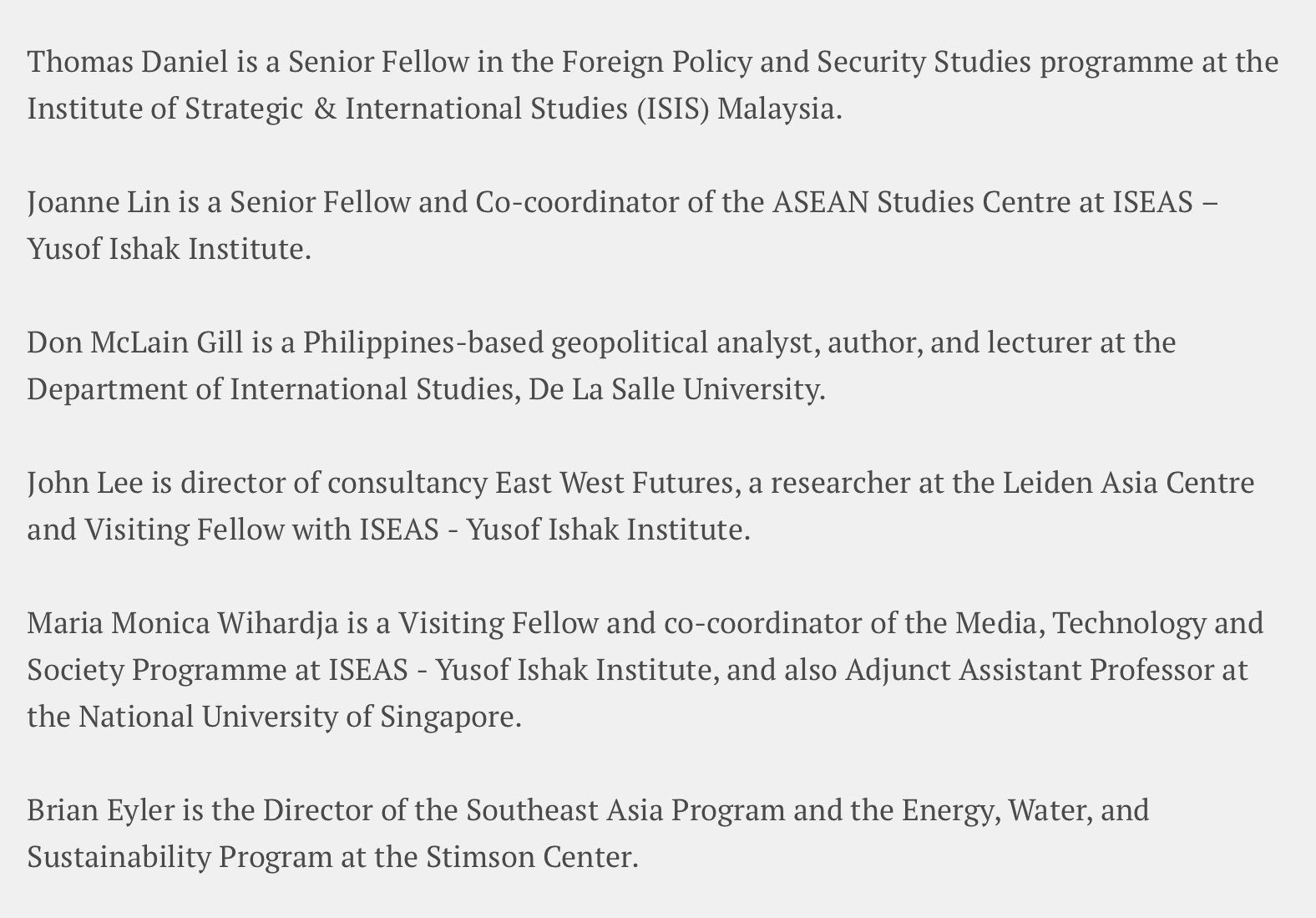
This article was first published in ISEAS Yusif Ishak Institute’s Fulcrum on 2 January 2025.



